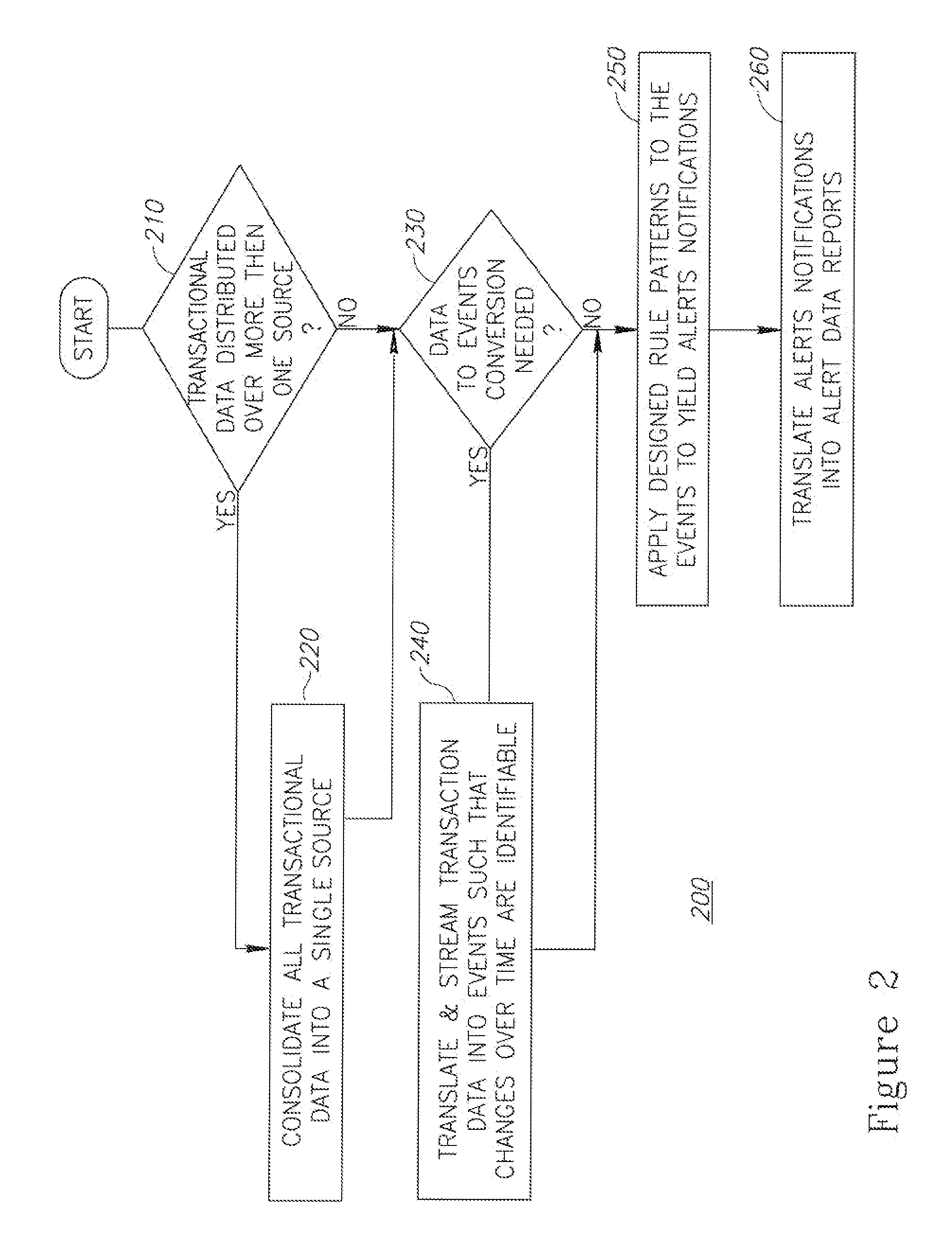Implementing continuous control monitoring for audit purposes using a complex event processing environment
a technology of event processing and continuous control, applied in the direction of instruments, buying/selling/leasing transactions, computing, etc., can solve the problems of affecting the efficiency of auditing, affecting the effectiveness of auditing, and affecting the quality of auditing, so as to achieve a high level of responsiveness to audit violations
- Summary
- Abstract
- Description
- Claims
- Application Information
AI Technical Summary
Benefits of technology
Problems solved by technology
Method used
Image
Examples
Embodiment Construction
[0016]Prior to setting forth the detailed description, definitions of certain terms that will be used hereinafter are provided.
[0017]The term “Continuous Control Monitoring” or CCM as used herein in this application refers to rules or steps in a process that are defined by an organization or a company in order to ensure that its policies, procedures, and business processes are operating effectively and in accordance with the management requirements.
[0018]The term “True CCM” as used herein in this application in the context of audit systems refers to CCM that provides the following three objectives: (1) continuous monitoring in the sense that real time data delivered as soon as a transaction is carried out; (2) exhaustive monitoring in the sense that all data sources are monitored simultaneously; and (3) a high level of responsiveness to certain changes tracked, such as an audit violation.
[0019]The term complex event processing or “CEP” as used herein in this application refers to pr...
PUM
 Login to view more
Login to view more Abstract
Description
Claims
Application Information
 Login to view more
Login to view more - R&D Engineer
- R&D Manager
- IP Professional
- Industry Leading Data Capabilities
- Powerful AI technology
- Patent DNA Extraction
Browse by: Latest US Patents, China's latest patents, Technical Efficacy Thesaurus, Application Domain, Technology Topic.
© 2024 PatSnap. All rights reserved.Legal|Privacy policy|Modern Slavery Act Transparency Statement|Sitemap



